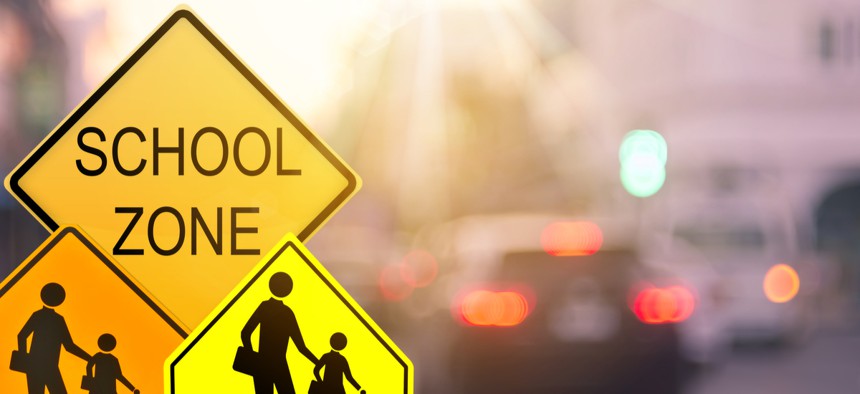A Statewide Safety System for Students

Pennsylvania debuted a statewide anonymous reporting system in January and received 615 tips the first week. Shutterstock
Middle and high-school students in North Carolina can anonymously report safety tips by app in the coming school year as part of a partnership between the state and nonprofit Sandy Hook Promise.
Starting this fall, middle and high school students across North Carolina will be able to anonymously report safety threats through an app, a 24-hour crisis hotline and a website.
The “Say Something” program will be offered to school districts across the state as part of a partnership between the N.C. Department of Public Instruction and Sandy Hook Promise, a nonprofit organization founded and run by people who lost loved ones in the 2012 mass shooting at Sandy Hook Elementary School in Connecticut. The program trains students and school employees to recognize warning signs of danger and report troubling behavior, including bullying and threats of violence, before they escalate to an emergency.
“What we need to get to is solving problems before they become tragedies,” said Drew Elliot, communications director for the N.C. Department of Public Instruction. “The earlier you can stop bullying, the earlier you can see the warning signs, the earlier you can get a read on a kid who needs help.”
Tips, which can be submitted anytime via the app, online form or hotline, are routed through a Florida command center staffed by trained counselors who triage each submission as “life safety” or “non-life safety.” Urgent safety threats—a student who is considering suicide, for example—are routed directly to local 911 call centers, while other complaints are sent to school officials, including administrators and school resource officers. Typically, about 15 percent of tips end up being sent to 911, according to Joe Maimone, chief of staff at the N.C. Department of Public Instruction.
“The remaining 85 percent would be things that we want to intervene on, including bullying,” he said. “There’s a priority list of contact for those—every school counselor, SRO, assistant principal—and a mechanism to provide information on how it’s been followed up on.”
The state’s partnership with Sandy Hook Promise came after the N.C. General Assembly included in the 2017 budget a provision requiring the Department of Public Instruction to implement a statewide anonymous tip system for middle and high schools. Lawmakers appropriated $5 million for the project, most of which will go to the staffed command center that receives and categorizes each tip, Maimone said.
“We hope to eventually have a center here, right in North Carolina, but the lead time and setup time to do that properly would not allow us to meet the requirement of the legislation, which was to implement this system by July 1,” he said.
Some school districts in North Carolina already have reporting systems in place and will be permitted to keep them, though it’s unclear how many might do so since the state is providing the “Say Something” platform for free. Every district will have the opportunity to use the system, but training will be staggered, with priority given to districts that do not currently have a reporting mechanism up and running. The first training sessions will take place this summer, Maimone said.
“We’ll begin by training 911 staff across the state, and the school administrators, or what we call the school safety teams, will need to be trained preferably before the students come back in the fall,” he said. “The last step is to go into the schools to train our students in roughly 1,500 schools. That doesn’t happen in a week or a month, so it will be an ongoing process.”
North Carolina is the second state to work with Sandy Hook Promise to train officials and students how to recognize warning signs in schools. Pennsylvania began that process in its schools in January, and the reporting system received 615 tips and calls in its first week, according to the state attorney general’s office. That level of interaction is bolstered by student engagement in the process, Maimone said, which underscores North Carolina’s main goal in implementing the system itself.
“Too often it’s adults trying to solve everyone’s problems for the students,” he said. “But we realize that the students are the best voices. They really want to participate, but sometimes they don’t know how to. The great thing about this is that it provides extensive training to be that community to look out for each other, and care for each other, and be that responsible citizen to ensure everyone’s safety.”
Kate Elizabeth Queram is a Staff Correspondent for Route Fifty and is based in Washington, D.C.
NEXT STORY: No More Cauliflower Rice? Louisiana Could Outlaw Certain Food Labels





